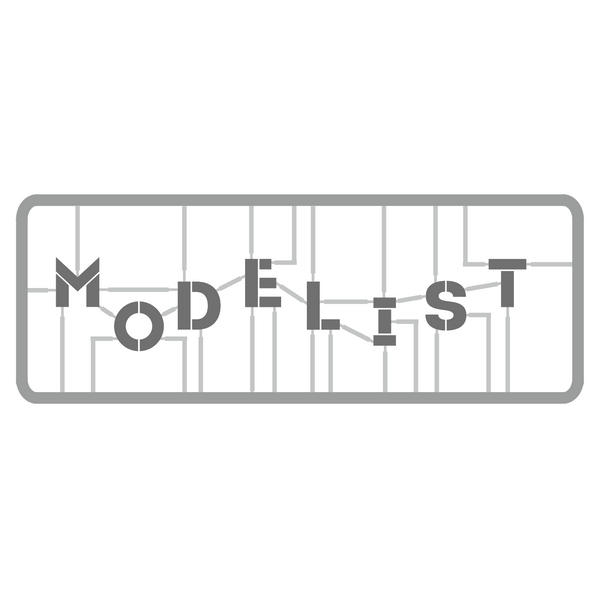What's on my desk? Part 52.
Share
Hello and welcome to the final blog of 2024!
First and foremost, thank you to everyone who has supported Modelist over the past year. You're helping me make a dream into reality.
A very happy and healthy new year to each and every one of you.
And now... *drum roll* the Fram!
It has arrived: the new 1/85 scale Fram from OcCre!
This is a ship whose history has captivated me ever since I saw it in Oslo. There's a whole museum dedicated to polar exploration and Norway's role in it, located on Oslo's 'museum island' (the Viking ship museum, Kon-Tiki museum and the Maritime Museum are also there). Fram and Gjøa are the highlights of the exposition, perfectly preserved and housed indoors. If you're ever in Oslo and even slightly interested in maritime history, the museum island is definitely worth a day-trip.
Fram ('forwards' in Norwegian) was conceived of by Fridtjof Nansen (a very interesting man; I'd really recommend reading more about him), specifically to overcome a big problem with polar exploration: ice. Fram was specially reinforced and shaped so that it would be pushed up onto the ice, and not be crushed by it.
Once again: really really interesting stuff. Definitely read up on the links I've given.
On to the model. I'm very excited to be making this. It's my first wooden ship model. So: (nearly) clean desk policy. The Daimler was put aside, final touches on the house were done and it was put in the shop window. Any paints and stuff not needed were boxed up and stored.
In the box you get a plastic tray (filled with smaller wood and metal parts), some laser-cut wood sprues, bundles of wooden sticks and strips and two envelopes.
The plastic tray contains preformed pieces, such as barrels and pulleys, some thread, nails, Norwegian flags,...
The rest of the box is filled with wooden parts. 7 frames of laser-cut pieces, bundles of sticks for masts, strips for decking and planking. Also in the box are instructions and plans.
The envelopes have more thread, cloth for tarps, photo-etch and pre-cut sails (not in the picture)
The instruction books are A3-sized, one step-by-step with colour photos and rigging plans of 30 pages, and one with text explanation of the steps and sail & mast plans of 20 additional pages.
So. I deviated from the instructions immediately to make the stand & nameplate first. The stand is made up of 4 parts, glued together with white glue. I had to fill a bit, because on these wood models the fit isn't that snug. The stand was then stained with Sapelli dye (included in the paint set). The nameplate is a metal part. I painted the background black, then sanded excess paint off the edges and name until the metal shone.
I'm putting the ship in my shop window every evening so any passersby can follow the build progress too. The nameplate helps it present nicely.
Next up is the basic structure of the ship: a central spine, with formers glued into it:
Pretty straightforward, you just need to make sure the formers are on a 90-degree angle.
The decks are made up of a big laser-cut piece, onto which you need to glue strips of 0.6 millimeter thickness. You measure the middle and start from there. Once all planks are in place and the glue is dry, you turn it over and cut the excess off with a sharp knife. I made a mistake here: the two notches on the top right weren't supposed to be cut out. A wood railing goes over it, so I'll leave it as is and fill in any gaps later.
This is what the part looks like before trimming the planks on the other side:
The real deck wasn't made up of full-length planks. OcCre has you make fake planks and nails by drawing them in pencil. I only had a small Ikea pencil that I couldn't keep sharp, so the definition is a bit soft. The YouTube videos OcCre released show the modeller using a mechanical pencil, so I dug mine up from home and brought it into the shop this morning.
The difference is clear. Sharper detail on both the lines and 'nails'.
In any case, the planks are a bit out of scale. Looking at photos of the real ship, there should be about double the number of planks. Not a very big deal, though. Cutting the strips lengthwise would be impossible to do cleanly with the tools I have here. I wonder if cutting the planks laterally would give better detail of the separate planks.
So, up next: finishing the deck planking, varnishing them, attaching to the ribs structure and then: sanding, sanding and more sanding. You need a clean taper to attach the hull planks, and right now the formers have a straight edge.
That was it for the last blog of the year.
See you next week!










